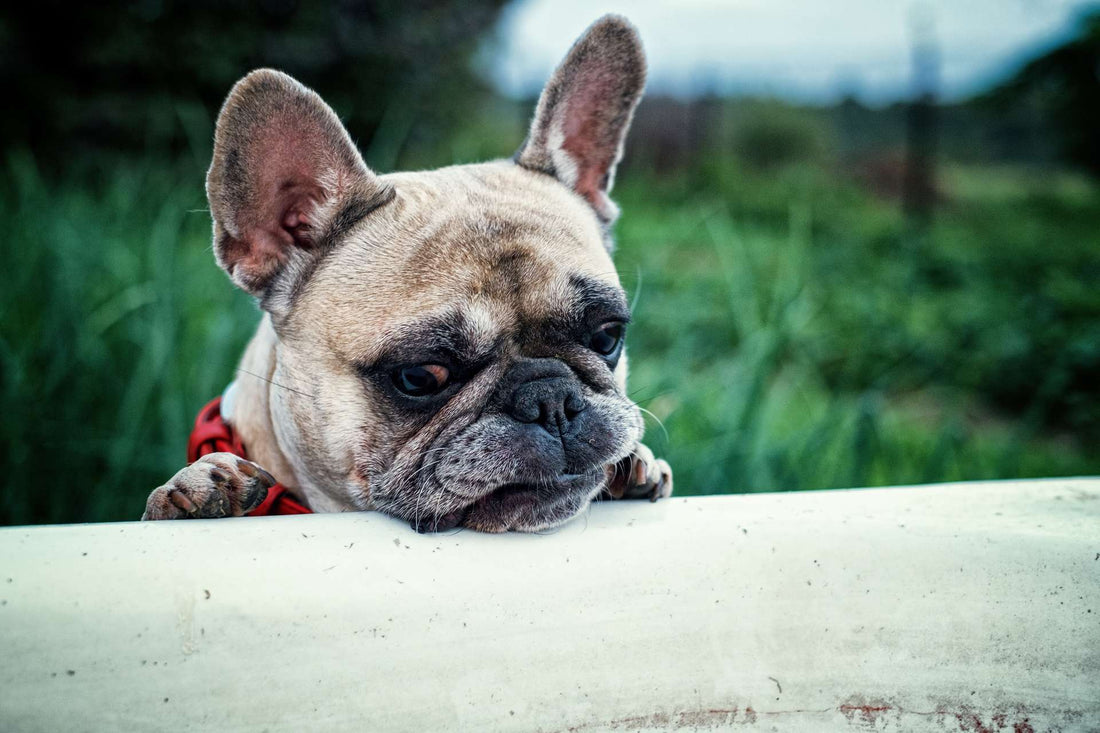One of the easiest ways to tell if your dog is suffering from an ear infection is to check for discharge around the ears. There are different types of colors and smells. Knowing the difference and what they mean can help your best friend get better faster. Here is a simple guide to the types of discharge you might come across.
Black and Granular Discharge
How to spot it: Look out for coffee grind-like discharge around your dog’s ears.
What it means: Black granular discharge is usually a sign of ear mites, which can also cause ear infections in dogs.

Treatment: You need to get rid of the ear mites as soon as possible. For this, you will need an ear flush, cotton balls or swabs, rubber gloves, and an ear mite medication. Clean out your dog’s ears twice daily until the discharge and ear mites are gone. This might be a messy affair so do it in an open area and with clothes that are easy to wash. If you suspect your dog already has an ear infection, use reliable products like our very own EcoEars Dog Ear Infection Formula to provide proper care.
Smelly Yellow to Green Discharge
How to spot it: This type of discharge will range from yellow to green, but you will really know because of the unpleasant smell that’s hard not to notice.
What it means: It might signal that your dog has a bacterial ear infection.
Treatment: A bacterial ear infection can be treated at home with natural products like EcoEars Dog Ear Infection Formula. Because of the rapid growth of bacteria, you should attend to this as soon as you realize there is an issue. The treatment will typically take around 12 days, but you should see improvement in just three days. If you don’t see any changes within 72-hours, your dog might be in need of antibiotics. If this happens, it’s best to pay a visit to the vet. Otherwise, the bacteria could spread.
Dark Brown Discharge and Pungent Odor
How to spot it: In this case, you will see a dark brown discharge, but most of all notice a pungent, fermenting-like odor.
What it means: This is frequently a sign of a fungal infection caused by yeast. This can happen after exposure to excessive moisture, for example, swimming or bathing. To prevent fungal infections, thoroughly dry your dog’s ears after water activities, especially if your dog has long droopy ears that can capture moisture and lead to infections.
Treatment: You should take almost the same steps as you would for an ear mite infection. Clean out your dog’s ears twice daily until you don’t see any discharge, and there is no smell. EcoEars for Dogs (or EcoEars for Cats)is a great option that works in 94% of all infection cases. It's also very easy to use. Simply
follow the instructions in this video.
A Mixture of Different Colors
In isolated cases, your pet might appear to be excreting a mixture of some or all of the above symptoms. This can be accompanied by shaking, scratching, and rubbing. If you notice this, it is usually a sign of more severe underlying problems, and you have to call your vet. Many medications work pretty well with the multiple symptoms problem, but it is essential to rule out any life-threatening conditions first.
Get a Closer Look at the Discharge
 If you are having a hard time figuring out what you are looking at, there is an easy way to check for discharge in your dog’s ears. Use a Q-tip to scoop just a bit and spread it on a napkin or a white piece of paper. Remember that your dog might be in distress or even in pain if there is an ear infection, so you don’t need to push too far.Be gentle when you check for discharge, you don't want to hurt your pet in the process.
If you are having a hard time figuring out what you are looking at, there is an easy way to check for discharge in your dog’s ears. Use a Q-tip to scoop just a bit and spread it on a napkin or a white piece of paper. Remember that your dog might be in distress or even in pain if there is an ear infection, so you don’t need to push too far.Be gentle when you check for discharge, you don't want to hurt your pet in the process.
Tell the Difference Between Discharge and Earwax
Sometimes, it can be hard to tell the normal ear wax and discharge apart. Typically, ear wax is yellow or tan in color, but after mixing with dirt, it can look darker. The quantity of wax can also help you to identify whether you’re dealing with wax or discharge: anything below 1/8 of a teaspoon for small dogs, ¼ teaspoon for medium-sized dogs and ½ a teaspoon for the larger dogs is considered normal. If you see a lot of wax build up in your dog’s ears or notice dirt, it’s probably a good idea to clean your pet’s ears. Here is a step-by-step guide to help you with this task.
Additional Resources:

